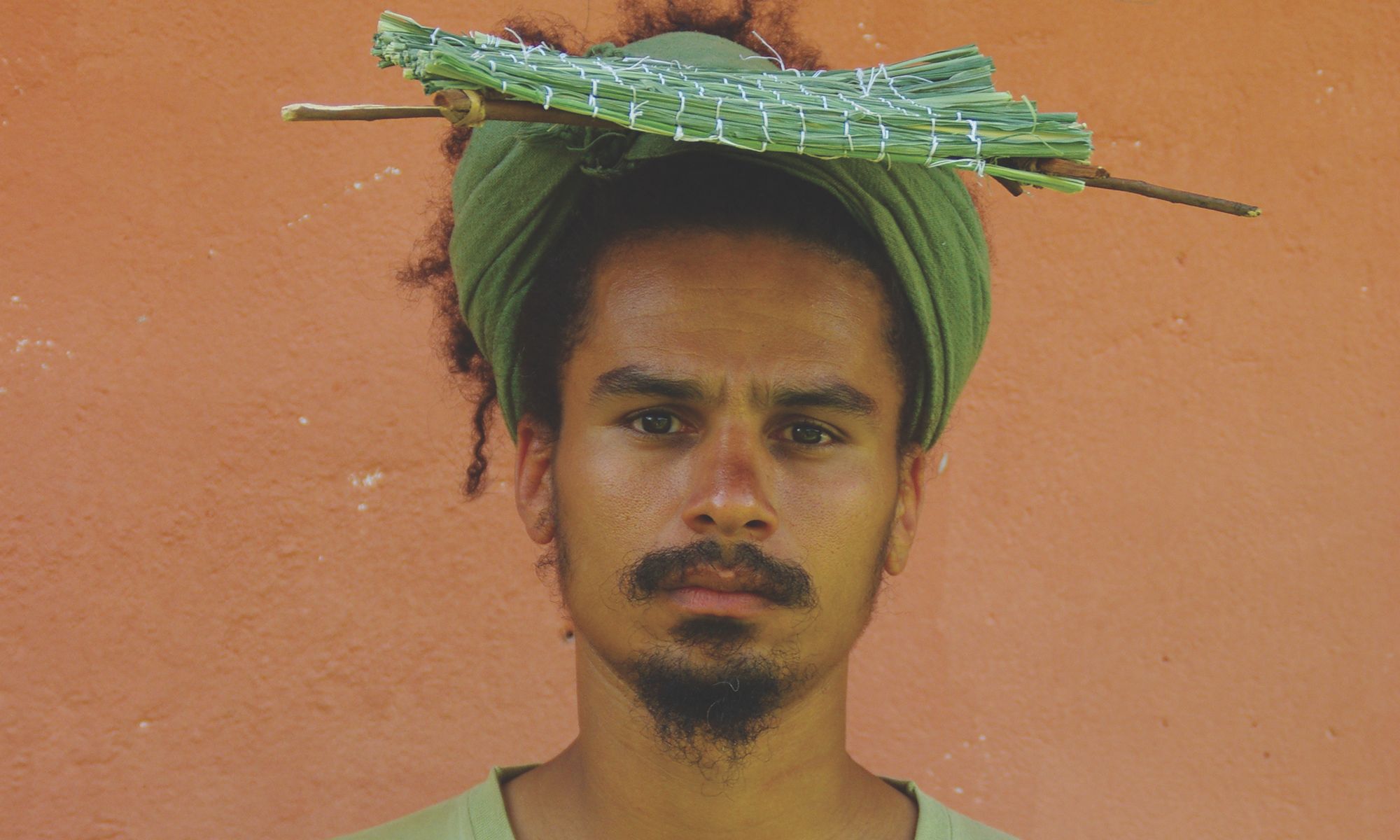Paulo Nazareth, Sem título (Untitled), from Objeto para tampar o Sol de seus olhos, 2010 Courtesy the artist
The Brazilian multimedia artist Paulo Nazareth traveled from Minas Gerais to New York on foot in his durational performance a decade ago and washed the dirt from his tired feet with the water from the Hudson River—only to walk back to his homeland to complete his artistic mission, Noticias de America. Nezareth is back in New York this week to inaugurate the Brazilian gallery Mendes Wood DM’s new Tribeca space with his thought-provoking photographs, sculpture and films on belonging, drift and endurance (until 10 June).
The work represents “multiple discourses about Americas, including Latin, Indigenous and Hispanic worlds, not only the United States”, says gallery co-founder Matthew Wood of the artist’s approach to border-crossing and meditative search. Nazareth was one of the first artists shown—“a guiding sprit”, the dealer says—when the gallery launched out of a small garage in São Paulo in 2010 before taking over the 1930s house in the front and, in 2017, a 19th-century house in Brussels.
The artist was an obvious choice to christen the North American space in a neighborhood that Wood considers an anthesis to the cookie-cutter, big-box gallery spaces in Chelsea. The dealer’s academic parents were opposed to the commodification of art and, in his teenage years, his visits to the gallery district were necessarily solo trips. “For me, Chelsea still has that association to the mainstream market,” Wood says.
Nara Roesler Gallery, Carlito Carvalhosa: matéria como imagem. trabalhos de 1987 a 2021, installation view. Photo: Charles Roussel.
Nezareth’s arrival this time is not an isolated event, as a wave of Brazilian artists conquer the city during Frieze New York. Carlito Carvalhosa’s first posthumous exhibition (until 18 June) at Nara Roesler looks at the seminal Conceptualist’s repertoire between 1987 and his passing last year. Gallery curator Luis Pérez-Oramas delves into the tirelessly experimental artist’s material explorations in wax, porcelain, plaster and mirror to emphasize what he calls “a constant” in the work. Pérez-Oramas had organized the artist’s project at the Museum of Modern Art, Sum of Days, which had made him the first Brazilian to occupy the museum’s prestigious atrium in 2011, as well as inviting Carvalhosa back to the museum for a performance during a Lygia Clark exhibition three years later.
“Carlito believed the images emerge from within the materiality of the work rather than been imposed or inscribed into a tabula rasa,” Pérez-Oramas says, and “his entire work demonstrates that he thought of it as an ideological fiction”.
The vast archive of notes and drawings the artist left behind has been critical in honouring the artist’s legacy in collaboration with the estate spearheaded by Carvalhosa’s widow Mari Stockler. She has recently donated one of his untitled installations of oil and wax paintings (from 2019-20) to the Guggenheim.
Bárbara Wagner, Pretinho da Hora, from the series A Procura do 5o. Elemento / In Search of the 5th Element, 2017. © Bárbara Wagner. Courtesy the artist and Fortes D’Aloia & Gabriel, São Paulo/Rio de Janeiro.
Beyond the galleries, more to see from Brazil awaits at Frieze with few notable firsts for the country’s vibrant art scene with support from Latitude, a program committed to representing Brazilian art galleries abroad. The experimental filmmaker Bárbara Wagner, who represented the nation at the 2019 Venice Biennale, is showing In Search of the 5th Element (2017) at Fortes D’Aloia & Gabriel’s Frieze booth. The large-scale, lens-based installation teases New Yorkers what is to come in Wagner’s first major US museum show, Five Times Brazil with her collaborator Benjamin de Burca at the New Museum, where she will present a mini survey of her video work.
Frieze’s Frame sector for younger galleries is hosting newcomer Sé Galeria , making its debut at The Shed with the Colorado-based Brazilian artist Rebecca Sharp’s gaze into the American west. High-altitude hallucinations could well describe the artist’s trippy paintings about the peaks of Americana with cracking earth and smoke meandering, which also reference the iconography and rituals of Indigenous groups in both South and North America.
Rebecca Sharp, Transamazônica, 2022. Photo: Sara Way, courtesy of Sé galeria
For a rare collaboration in a fair setting, visit Galeria Marilia Razuk and Galeria Jaqueline Martins’s joint stand for the exhibition At once: provocation and reflection, which highlights similar and contrasting ties between the works of José Leonilson and Hudinilson Júnior. Both were born in 1957 yet died two decades apart. They lived through Brazil’s dictatorial regime in the 1960s as gay men. From Leonilson’s passing from Aids-related complications at age 36 to Hudinilson Júnior’s obsessive experiments with the Xerox machine, the nude male body is a connecting tissue between their practices, a timely remembrance of corporal defiance as Brazil prepares for a presidential election in a turbulent climate.

